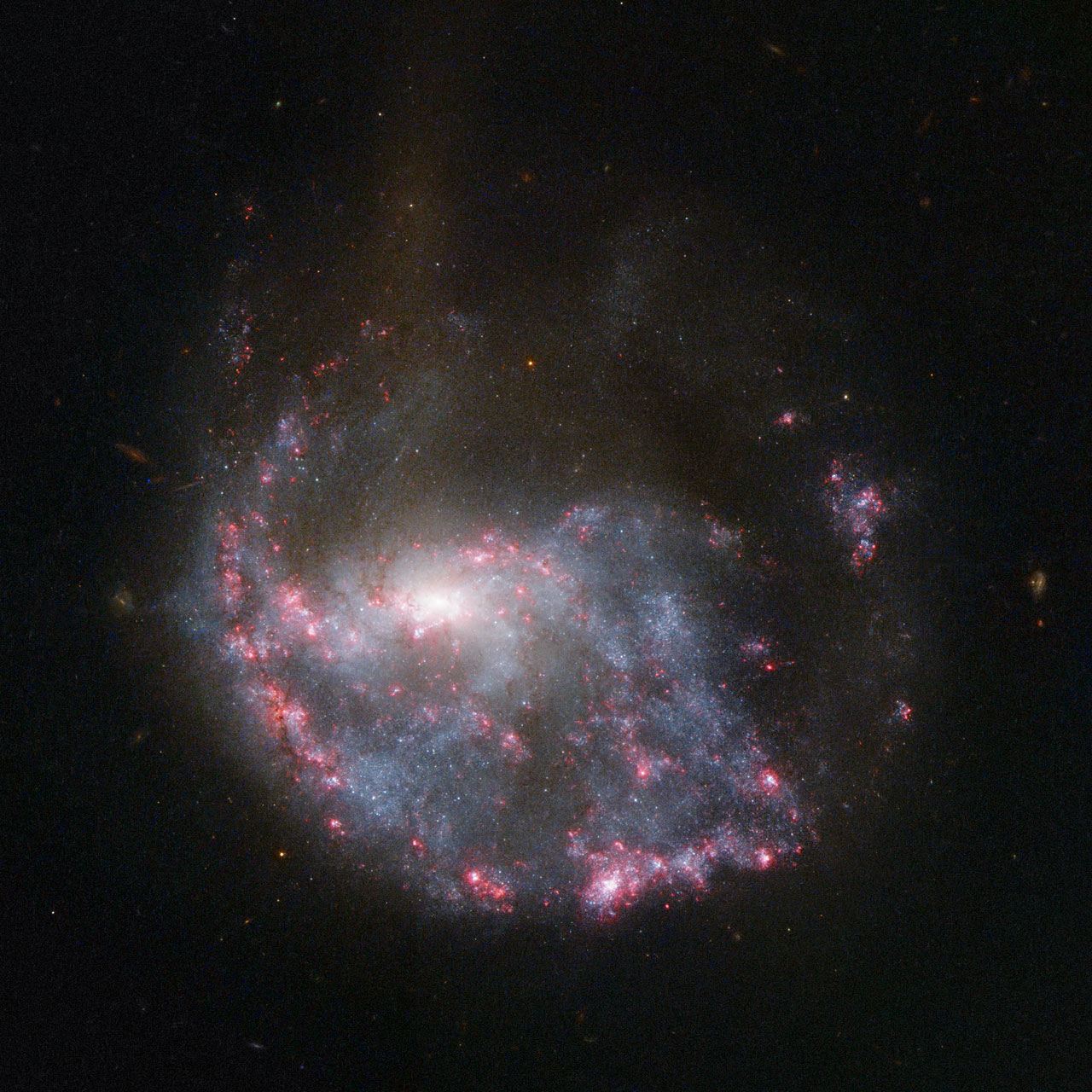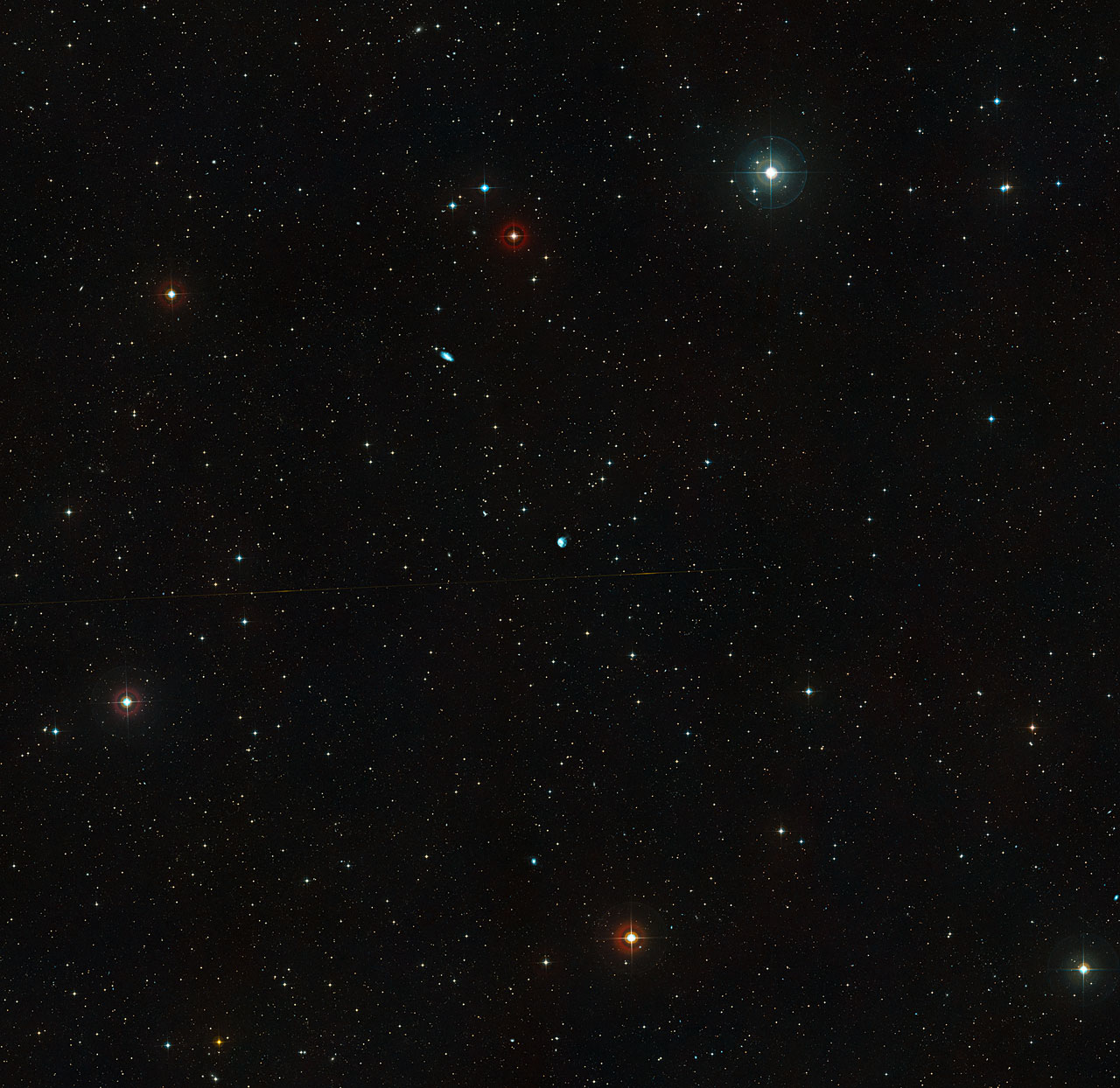

| Visitors Now: | |
| Total Visits: | |
| Total Stories: |

| Story Views | |
| Now: | |
| Last Hour: | |
| Last 24 Hours: | |
| Total: | |
Galaxy Collision Of NGC 922: Hubble Sees A Galaxy Hit A Bullseye
Bright pink nebulae almost completely encircle a spiral galaxy in this NASA/ESA Hubble Space Telescope image of NGC 922. The ring structure and the galaxy’s distorted spiral shape result from a smaller galaxy scoring a cosmic bullseye, hitting the centre of NGC 922 some 330 million years ago.

Credit: NASA, ESA
NGC 922’s current unusual form is a result of a cosmic bullseye millions of years ago. A smaller galaxy, catalogued as 2MASXI J0224301-244443, plunged right through the heart of NGC 922 and shot out the other side. In wide-field views of the NGC 922, the small interloper can be still be seen shooting away from the scene of the crash.
As the small galaxy passed through the middle of NGC 922, it set up ripples that disrupted the clouds of gas, and triggered the formation of new stars whose radiation then lit up the remaining gas. The bright pink colour of the resulting nebulae is a characteristic sign of this process, and it is caused by excited hydrogen gas (the dominant element in interstellar gas clouds). This process of excitation and emission of light by gases is similar to that in neon signs.

Credit: NASA, ESA, CXC
These objects, called collisional ring galaxies, are relatively rare in our cosmic neighbourhood. Although galaxy collisions and mergers are commonplace, the precise alignment and ratio of sizes necessary to form a ring like this is not, and the ring-like phenomenon is also thought to be relatively short-lived.

Credit: NASA, ESA, Digitized Sky Survey 2 (Acknowledgement: Davide De Martin)
The chances of seeing one of these galaxies nearby is therefore quite low. Despite the immense number of galaxies in the Universe, this is one of only a handful known in our cosmic neighbourhood (the Cartwheel Galaxy, see potw1036a, being the most famous example). Observations of the more distant Universe (where we see further into the past) show that these rings were more common in the past, however.
Episode 60 of the Hubblecast explores NGC 922, a galaxy that has been hit square-on by another. Ripples of star-formation are still propagating out across thousands of light-years of space over 300 million years after the collision, making it a prime example of what astronomers call a collisional ring galaxy.
Hubble’s image of NGC 922 consists of a series of exposures taken in visible light with Hubble’s Wide Field Camera 3, and in visible and near-infrared light with the Wide Field and Planetary Camera 2.
Episode 60 of the Hubblecast explores NGC 922, a galaxy that has been hit square-on by another. Ripples of star-formation are still propagating out across thousands of light-years of space over 300 million years after the collision, making it a prime example of what astronomers call a collisional ring galaxy.
Credit: ESA/Hubble
Oli Usher, Hubble/ESA
More stories:
Aliens On Wildlife Cams In Two Different States
Video: UFO Over “Space Mountain” In France Where Aliens Will Emerge On Doomsday Say Believers
Optical Transistor 10,000 Times Faster Than World’s Fastest Electronic Transistor
New ’4-D’ Transistor Is Preview Of Future Computers
Synthetic Fuel Could Eliminate US Need For Crude Oil
The Solar Kill Shot, Remote Viewing, Mars, ETs, Dimensional Beings And Colonel Ed Dames
Number Of UFOs Around Sun Increased Since Last Week!
The Peak Of Eternal Light, Possible Lunar Base Site Where The Sun Never Sets
Major Earthquakes In Pacific Northwest and Himalayas Predict Stanford Scientists
Bold Gold Heist: Thieves Make Off With Millions, “Like A Movie Operation, Very Fast”
Twice The Ice On Titan: Vast Ocean Lies Beneath Icy Crust On Saturn’s Largest Moon
World’s Oldest Person Besse Cooper Passes At Age 116, Reveals Long Life Secrets
Death-Defying Comets Plunge Into The Sun’s Atmosphere
Sun’s Innermost Atmosphere Seen
Scum Villages Introduced In Europe, Forced Living In Containers For Undesirables
Black Marble: Unprecedented Views Of Earth At Night Released By NASA
Is QE3 Accelerating the World Hunger Crisis?
UFOs, ETs, MJ-12 And Government Knowledge
Most Powerful Earthquake Zones Identified


